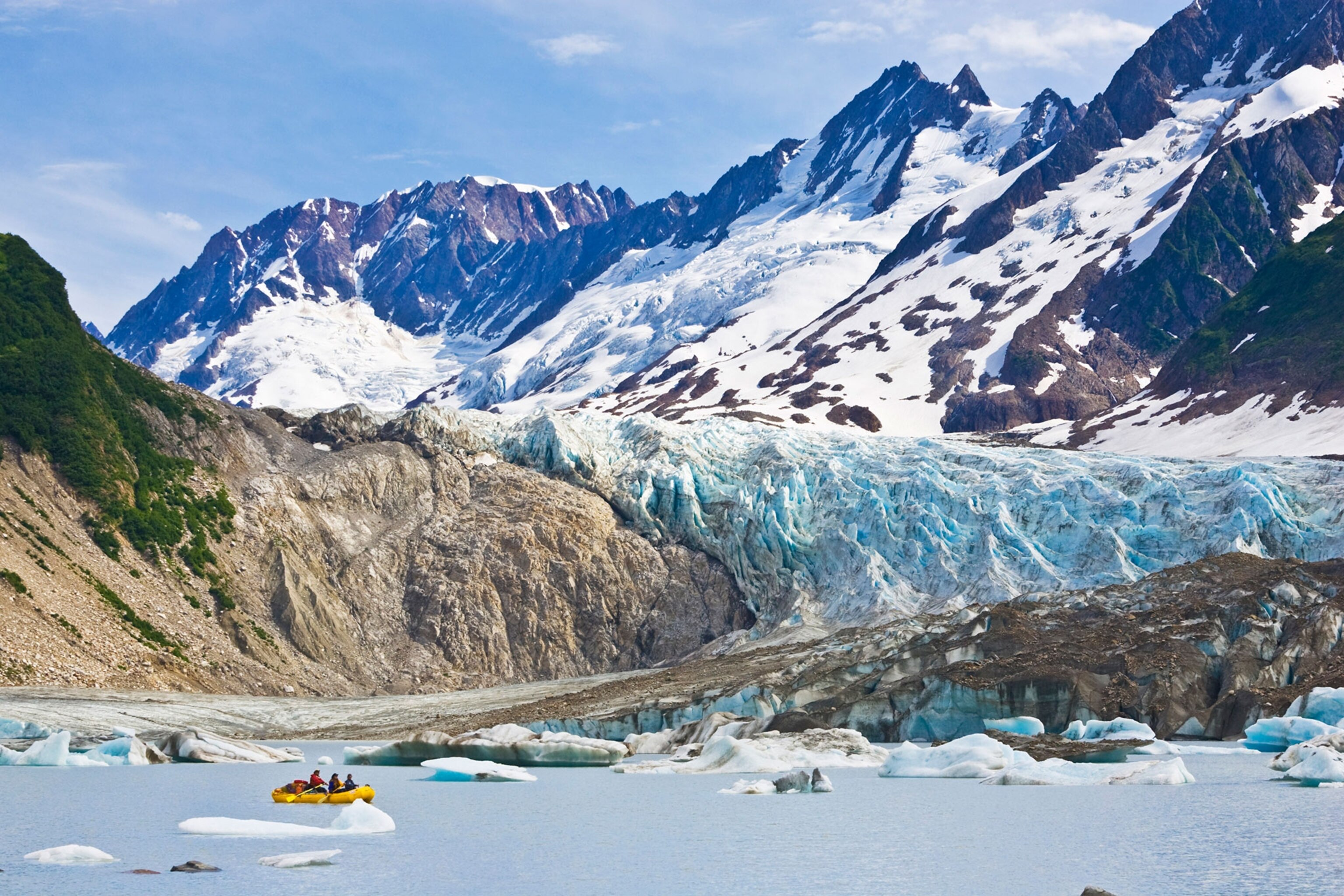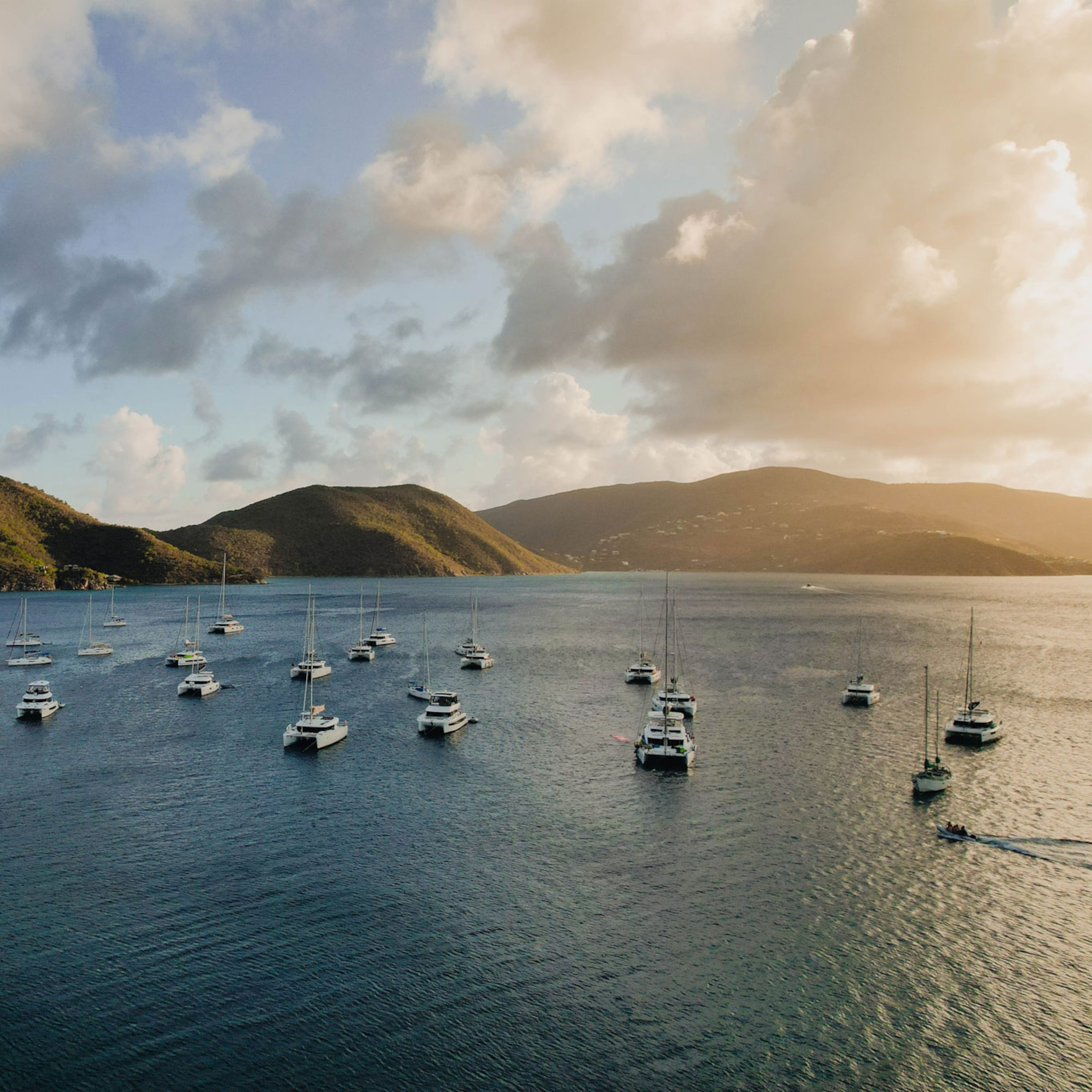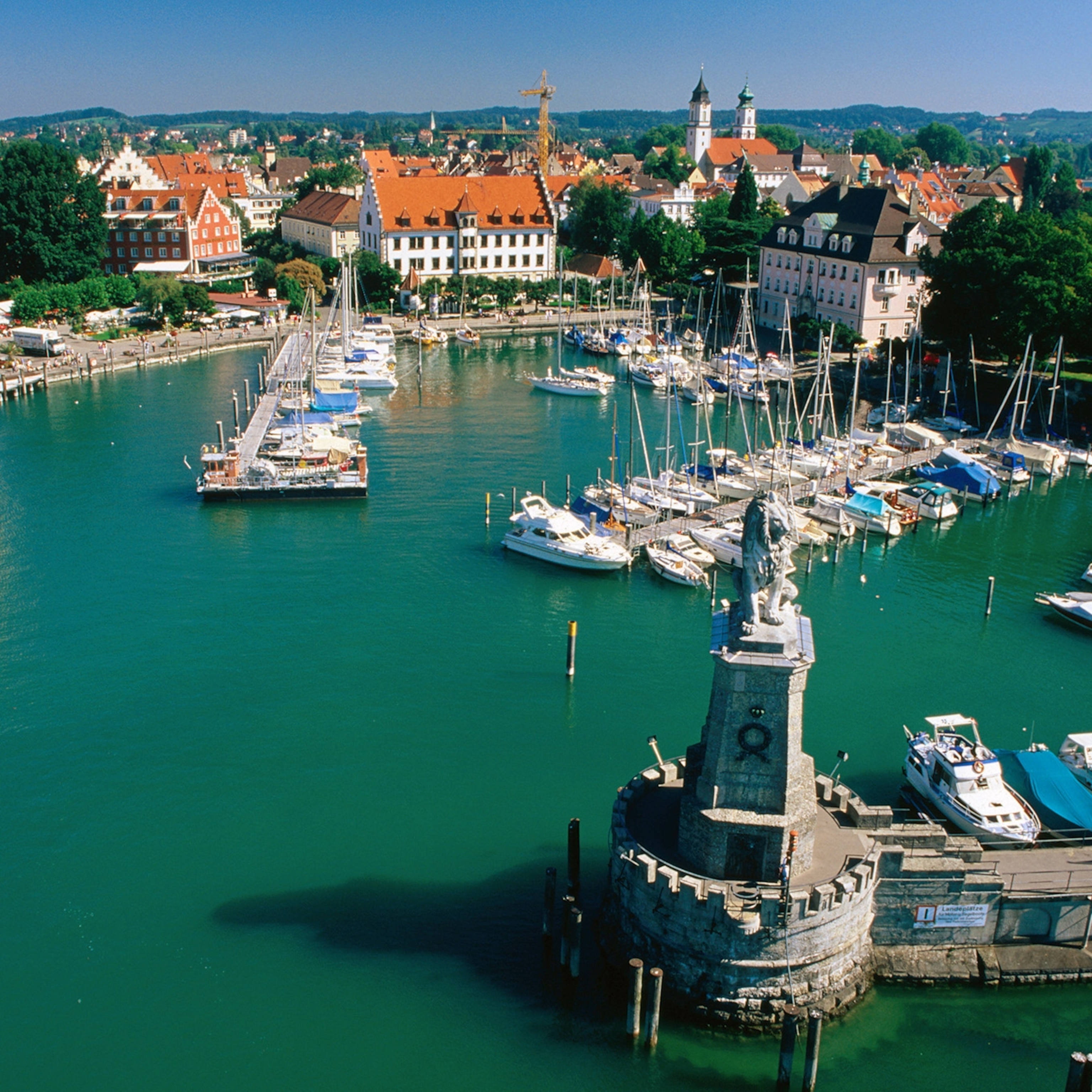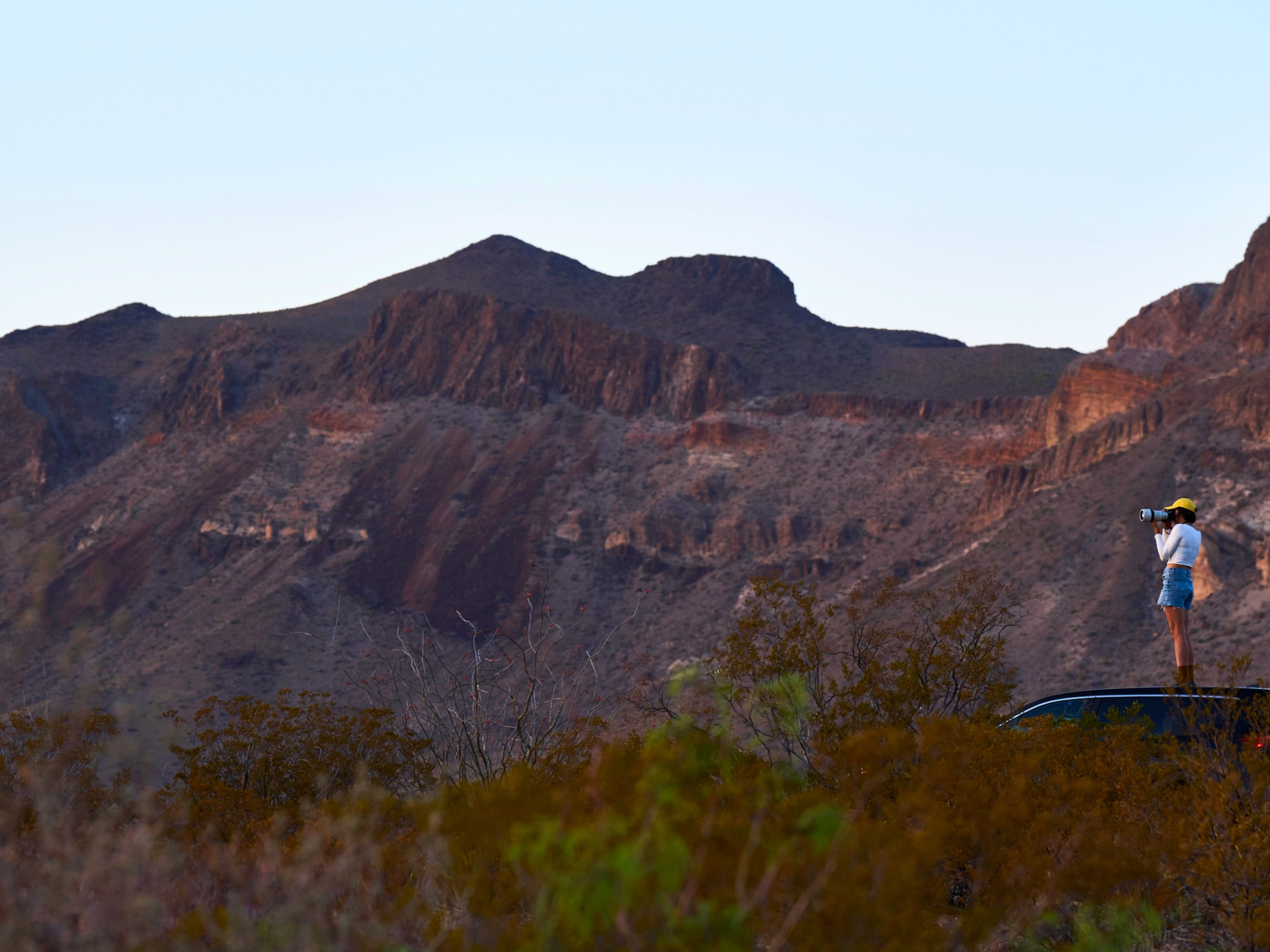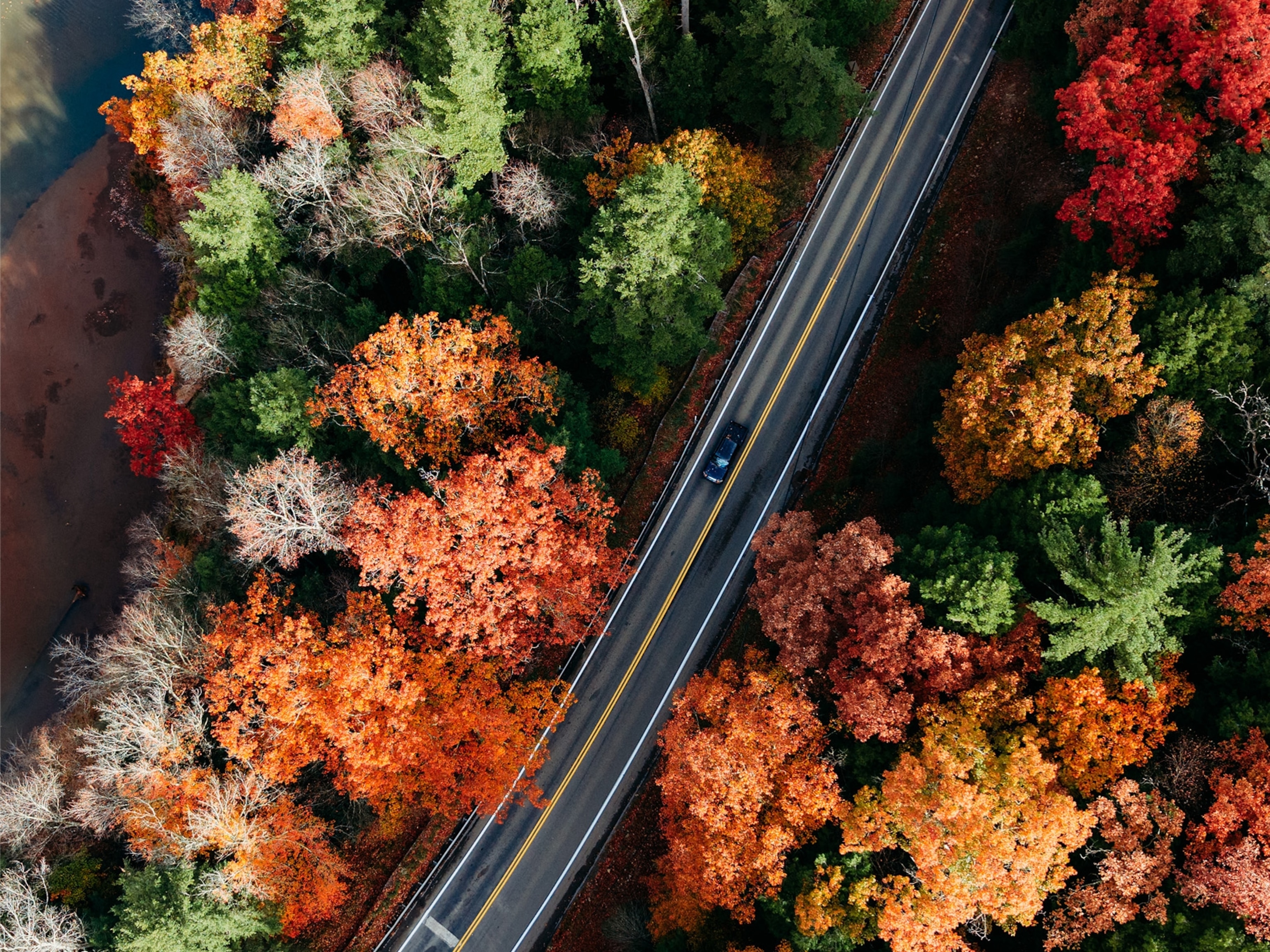The World’s Best Paddling Trips
See a different side of the globe by exploring it on the water.
These paddling adventures run the gamut from whitewater to flat and freshwater to salt. They involve all kinds of muscle-powered watercrafts. What do they have in common? The promise of epic days on the water and memories you'll dream about for years afterwards.
Explore Alaska's Coastal Wilderness at Glacier Bay
When glaciers tumble down from coastal mountains to calve enormous icebergs into the ocean in front of your bow, you know you're not paddling in the local pond anymore. In Glacier Bay National Park and Preserve, you'll share such awe-inspiring sites—along with the waters of the inside passage—with orcas, sea lions, and humpback whales.
Cruise ships visit part of this coast (for good reason), but those visitors look over the rail for a day and move on, never docking. Paddling here means calling a real Alaskan wilderness home for a while. Chart your own adventure by renting kayaks at the park and catching a ride on the daily tour boat, which picks up and drops off campers at designated spots along the 800-mile coast. Or sign up for an expert-led trip to visit the region’s less-frequented locations.
Raft the Grand Canyon End to End
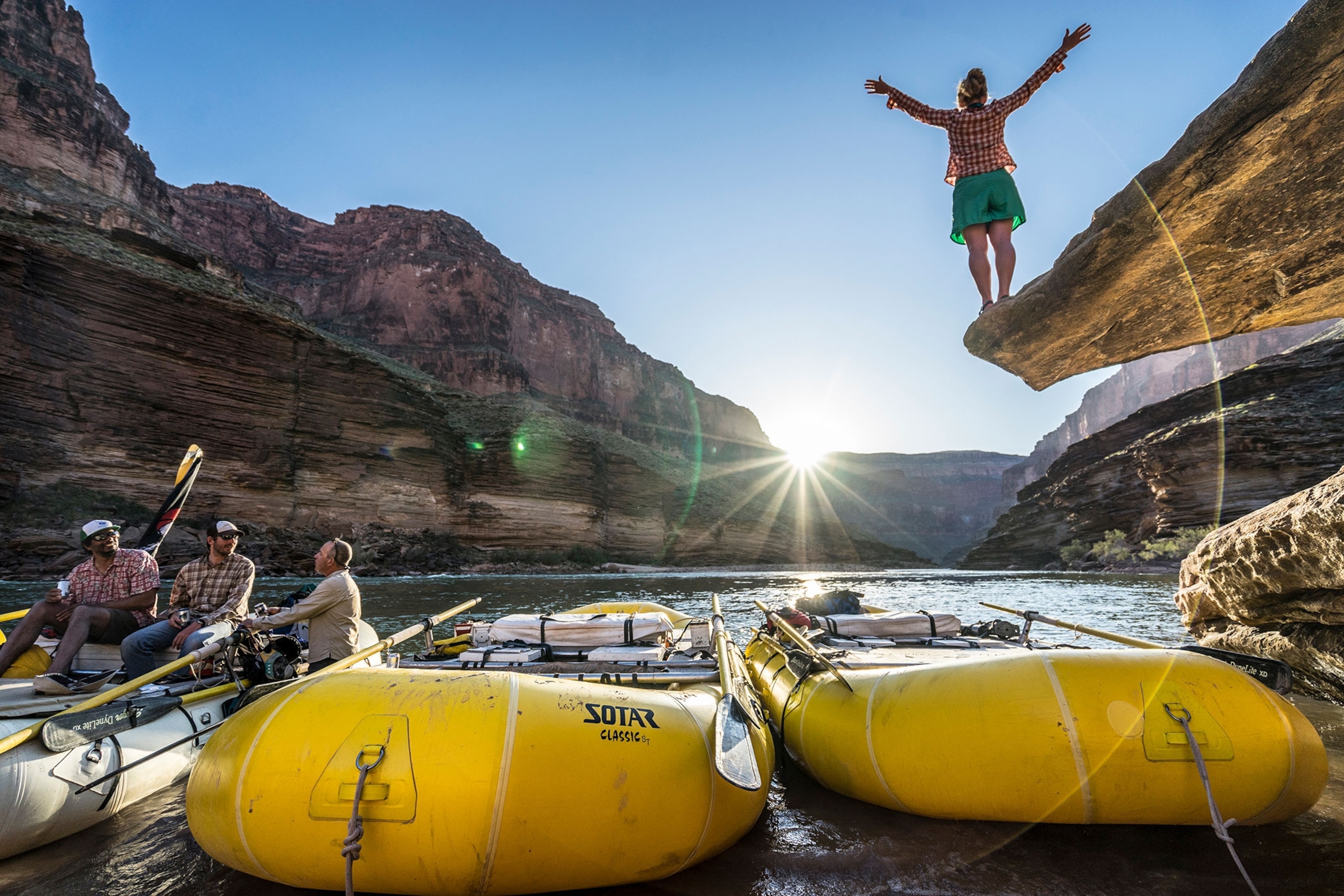
'You cannot see the Grand Canyon in one view, as if it were a changeless spectacle,” wrote one-armed Civil War veteran John Wesley Powell. Only by running it on the Colorado River, as he did in 1869, can the canyon's rocky walls, bright colors, and rushing water produce for the paddler an experience “never again to be equaled on the hither side of Paradise.”
Plenty of people have taken Powell at his word. Few have been disappointed by the world-class rapids and otherworldly scenery of this American wilderness. Immersing yourself in the Grand Canyon by traveling the river that carved it is an experience in demand. Permits for private boaters are awarded only to winners of a lottery. But joining a guided trip can get you into a raft or a wooden dory and off on the journey of a lifetime.
The Upper Grand Canyon's 87 miles take three to six days to explore by boat, depending on how many side canyons and Native American ruins you’d like to explore. The Lower Grand Canyon's 100 miles, home to slightly bigger rapids, take seven to nine days. Most Colorado veterans agree on which portion is best—neither. Running the whole canyon, like Powell, is the only way to go.
Pair Whitewater With a Wildlife Safari on the Zambezi
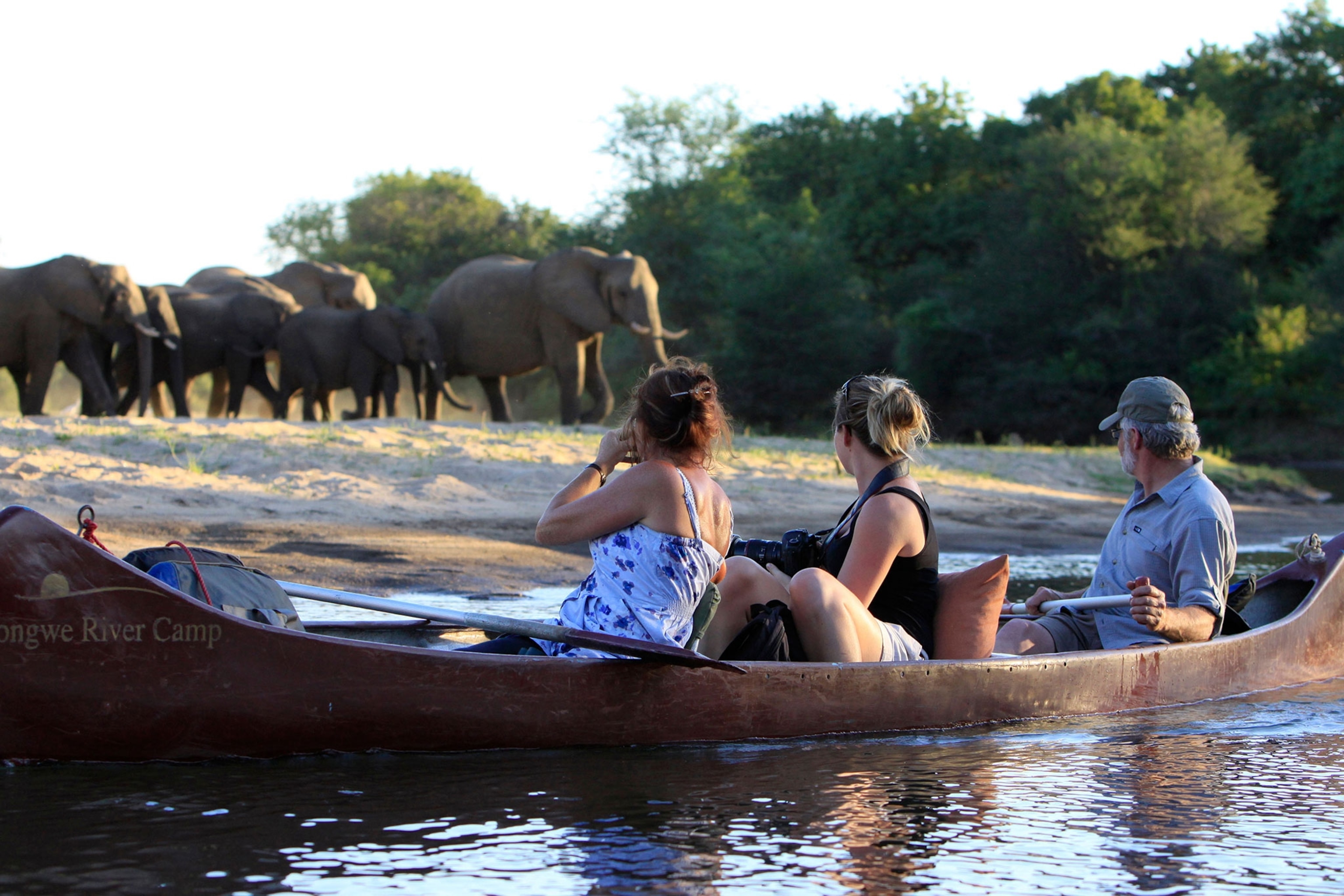
Only a truly jaw-dropping cataract like Victoria Falls could give rise to a river like the Zambezi. Rafts launch in the enduring mist below the 360-foot falls and roar along with the enormous volume of water funneled through Batoka Gorge on a heart-pumping thrill-ride through aptly named rapids like Gnashing Jaws of Death, Devil's Toilet Bowl and Commercial Suicide. (Guides usually portage that last one.)
An expedition on the river's mellow lower sections offers an entirely different type of adventure. You’ll travel through some of Africa's great game lands, like the famed Mana Pools National Park, and spend your evenings around the campfire reliving the day's close and personal encounters with elephants, hippos, big cats, and, yes, river crocodiles. The water may be smooth, but the lower Zambezi definitely has a wild side.
Get Lost in the Fiji Islands
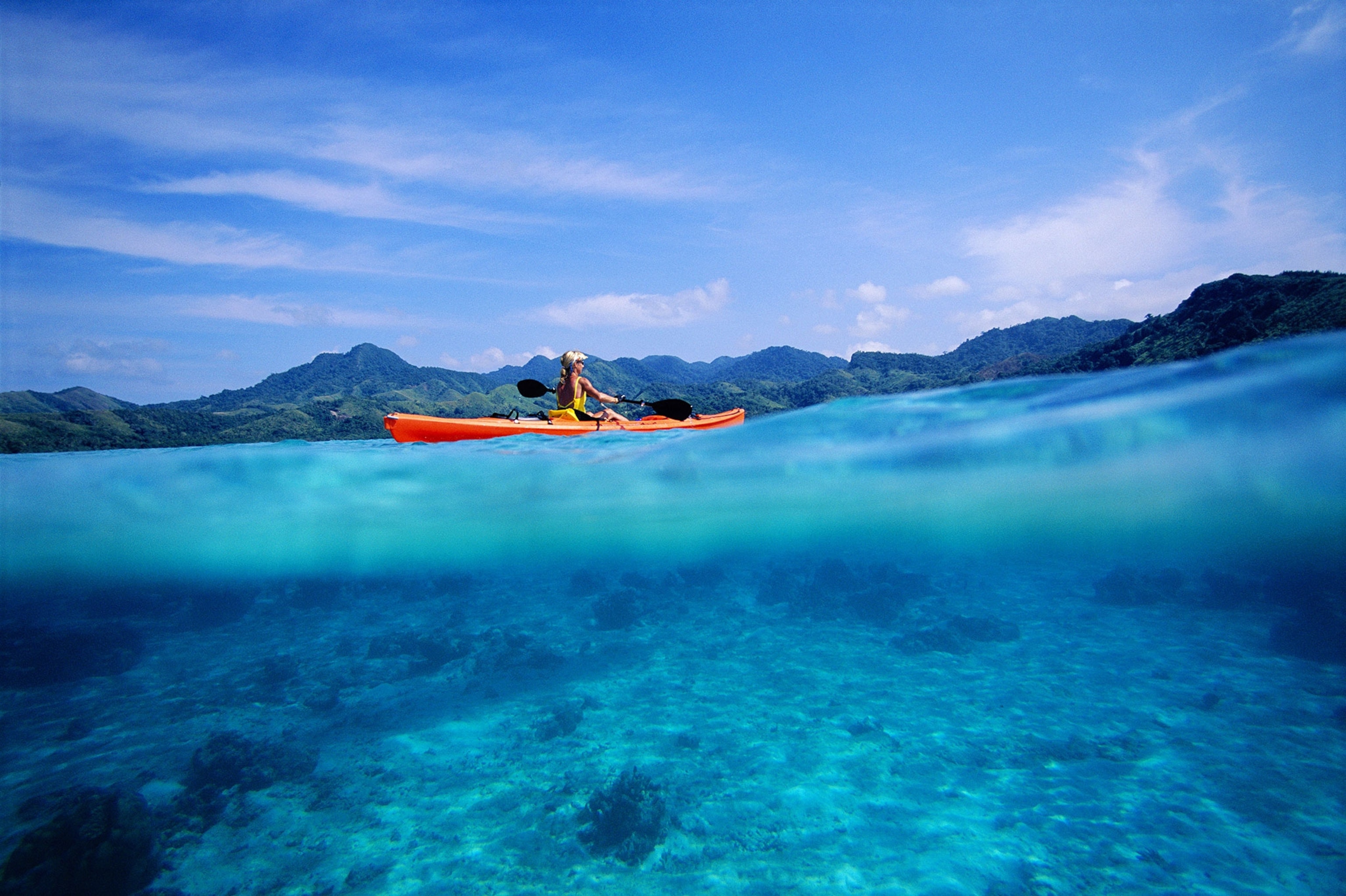
What would you call an archipelago of lush tropical islands, lagoons, and pristine beaches surrounded by clear blue seas with teeming coral reefs? You might call it a paddler's paradise. Add the chance to run the rapids and waterfalls of an incredible rainforest river like the Upper Navua and there's only one word for it all—Fiji.
Local knowledge can make it easy to explore Fiji by paddle, and experts can show you sides of the islands other visitors miss.
Trips with Tamarillo Active Travel will have you exploring Fiji's remote Kadavu island group with indigenous guides and give you the chance to overnight in traditional villages. South Sea Adventures runs trips to the Yasawa Island group, which also include village stays and the option to maroon yourself (temporarily) by camping on deserted islands. Both operators also offer custom adventures, so your ability to explore this tropical paradise is limited only by how much time you can spare before dragging yourself back to the real world.
Island Hop Along Croatia's Dalmatian Coast
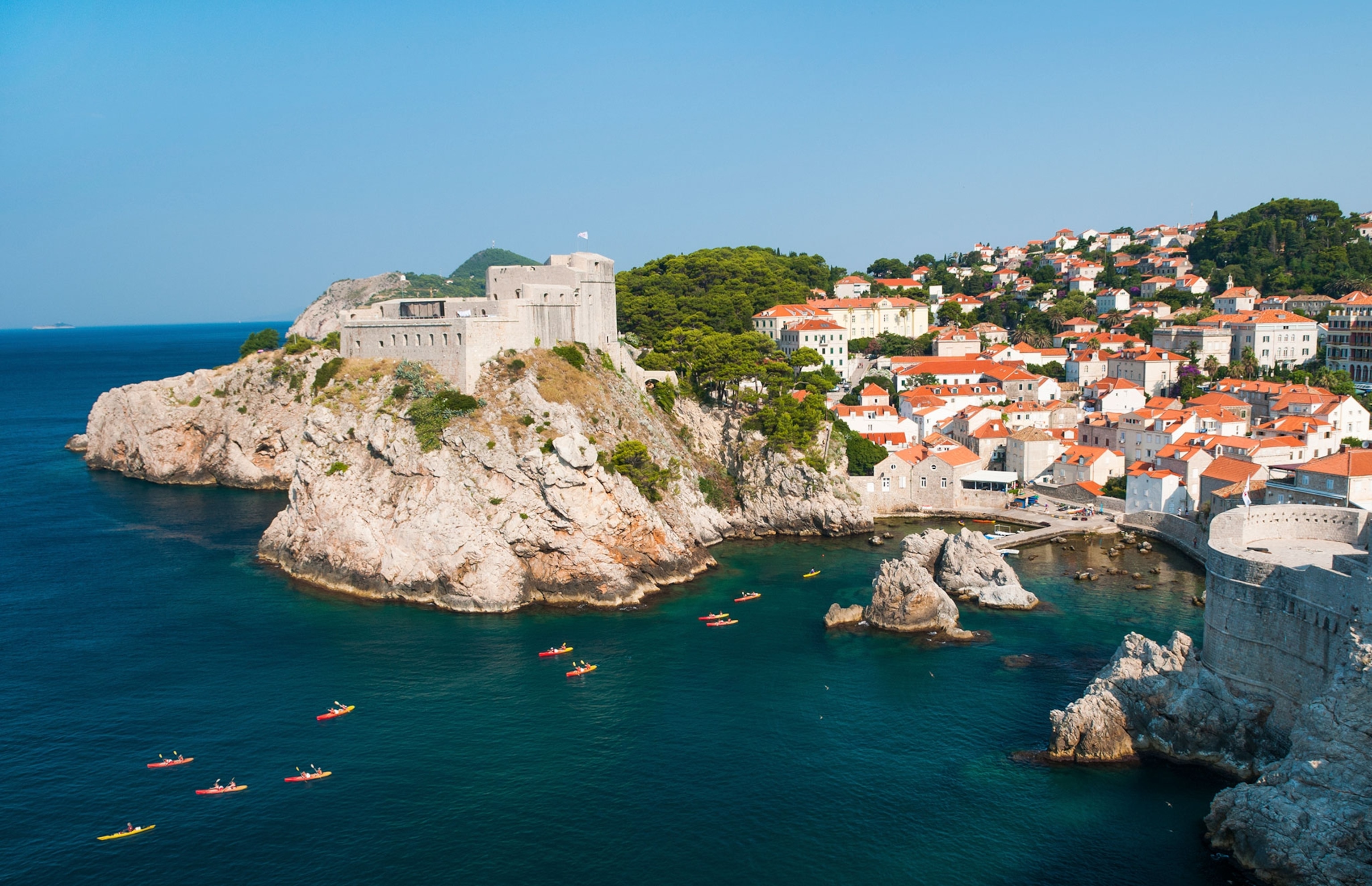
George Bernard Shaw called Dubrovnik a 'paradise on Earth.' The Croatian coastal city is indeed wondrous, but, since Shaw never explored the surrounding coastline by sea kayak, he missed out on some of the country’s greatest beauty.
If you take the trip, you'll find the mesmerizing waters along the Dalmatian Coast as clear and blue as any in the world. And they're blessed with hundreds of islands, teeming coral reefs (don't forget a snorkel), and seaside, terra cotta-roofed villages with historical roots dating back to Roman days.
The area's calm waters and light boating traffic make island hopping a delight. Explore Croatia's wild side by poking around the many uninhabited islands, deserted beaches, and hidden caves or grottoes. And don't miss out on getting to know the locals. Dry off in some of the area's coastal villages, and you'll soon be toasting new friends with rakia over a seafood feast in a waterfront taverna, while picking up ideas for the next day's paddle.
Discover The Galapagos Most Visitors Miss

There is nowhere on Earth quite like Ecuador's Galápagos archipelago, where a menagerie of animals, including sea turtles, marine iguanas, and penguins, has evolved in splendid isolation. And there's no better way to explore this magical place than from the seat of a kayak. Currents and winds can sometimes make paddling here an adventure—but that's part of the fun. The payoff? Kayaks can access the area's reefs, mangroves, and beaches in a way that larger ships can't, enabling up close and personal encounters with the famous residents of these islands and the more remote areas they often call home.
The islands are spread out over thousands of square miles of ocean, so guided trips are based on comfortable, kayak-carrying yachts. Before you grab a snorkel to swim with the sea lions or begin your search for a blue-footed booby, be sure to book with a reputable outfitter that's committed to sustainable eco-tourism. These groups also employ the best naturalist guides to explain this incredible living laboratory, and if you're paddling the Galapagos, you deserve nothing less.
Canoe Through America's Northern Boundary Waters
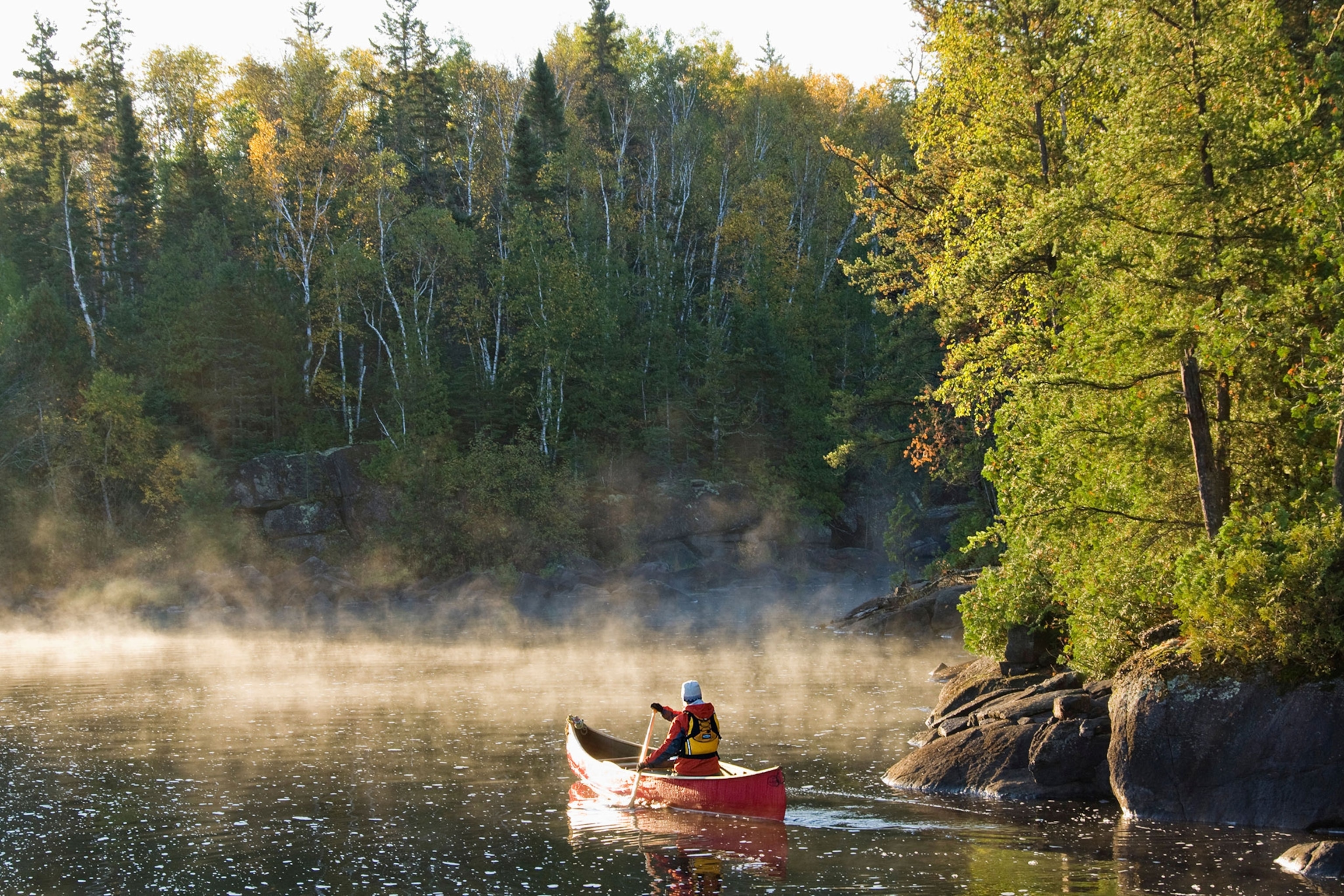
French voyageurs explored this realm of northern forest two centuries ago by paddling thousands of interconnected lakes and streams. Following in their wake, it's easy to imagine that not much has changed. Signs of human habitation are few, unless you count the Native American pictographs left on rocks by the ancient travelers who first paddled these waters.
Traverse any of Boundary Waters Canoe Area Wilderness's over 1,200 miles of canoe routes, and choose from more than 2,000 Instagram-worthy backcountry campsites scattered along the rocky shores and sandy beaches. But don't expect to share your adventures until after they’re over; the Boundary Waters are all about disconnecting. Take a swim, hook a northern pike or walleye, and soak up the scenery and the solitude around the campfire while listening for howling wolves.
And while it would take many, many enjoyable days to explore Boundary Waters, it's only part of a much bigger picture. Another vast expanse of comparable watery wilderness, with far fewer visitors, lies just across the border in Canada's Quetico Provincial Park.
Paddle Patagonia's Whitewater Legend

Patagonia's towering peaks in Chile form an incredible backdrop to the sparkling turquoise river born from their snow and ice. The Futaleufú River's long plunge toward the Pacific produces one of the world's most coveted whitewater runs, from the Class V+ behemoths of the upper river (rockstar paddlers and adventurous rafters only) to more mellow but equally memorable thrill ride found on other sections.
- National Geographic Expeditions
This is wild country, but eco-friendly outfitters have established riverside camps and lodges that make an expedition easy—and even a luxury, if your budget allows. There are also plenty of side activities available for the adventurous, including hiking, mountain biking, horseback riding, and even SUP yoga in the river's calmer stretches.
Find the Lost Worlds of Phang Nga Bay
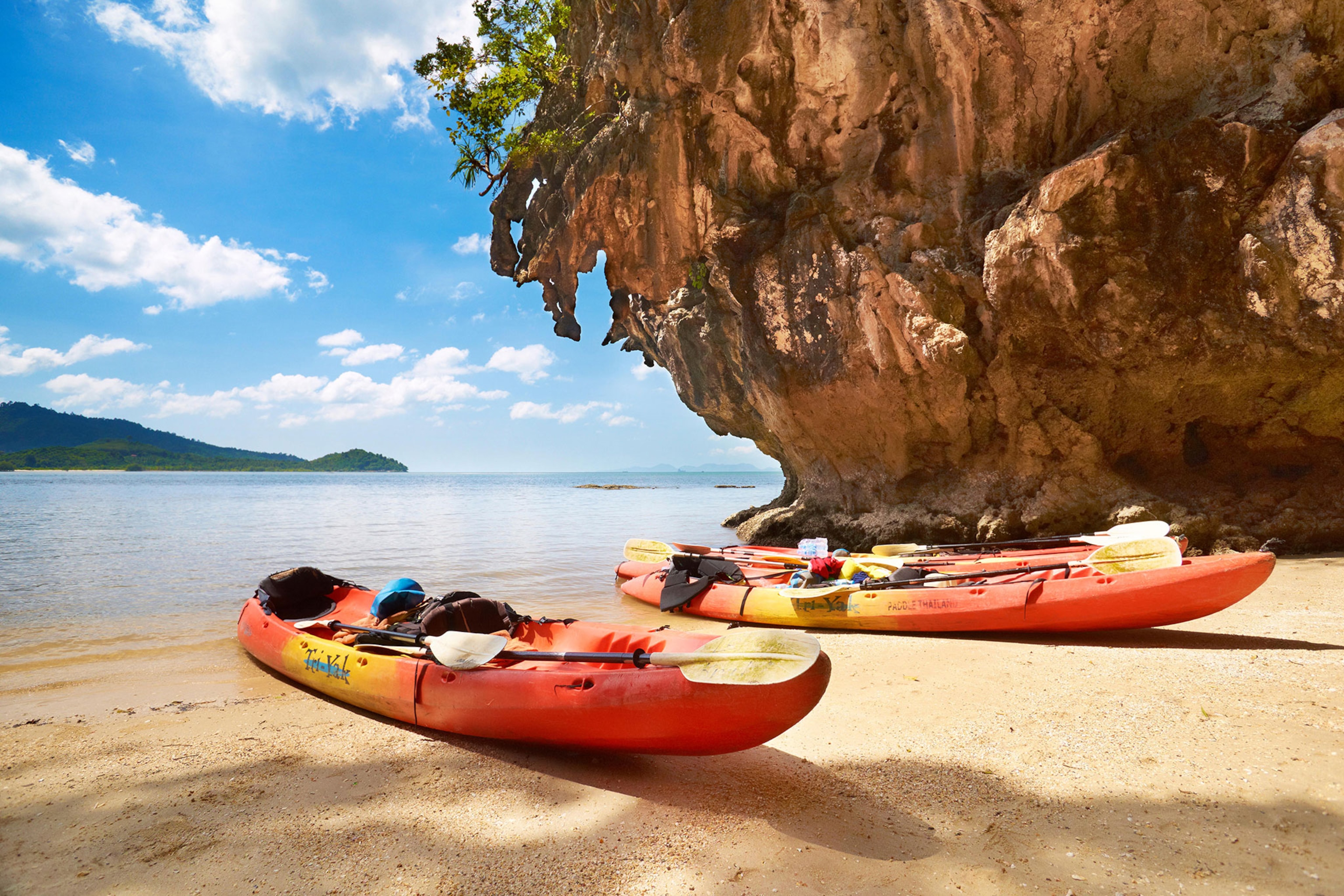
Phang Na Bay is a symphony of sea and towering rock. Its striking beauty has brought fame—and throes of tourists—to Thailand. But the paddler's bay is entirely different. Phang Nga's islands and limestone pinnacles shelter hidden treasures awaiting discovery; mangroves, stalactite-filled sea caves, and the long-hidden hongs. These inner-island lagoons have been sealed off from the rest of the world for eons, surrounded by rocky walls teeming with birds and beasts, and can only be entered by squeezing your boat through tight sea cave entrances known only to locals.
Hire a guide to help pilot one of the two-person, open kayaks favored here. They're specially designed to travel around, into, and through the bay's many rock wonders. You won’t have gotten your fill in just a day, and you don’t have to stop there. Eco-tourism outfitters ferry boaters around the massive bay for multi-day explorations and provide island campsites with starry skies and solitude that the region's famed resorts simply can't offer.
Stand and Paddle a Hawaiian Downwinder

Paddleboarding may be an up-and-coming sport in much of the world, but it has a long history in Hawaii. It was practiced by the legendary Duke Kahanamoku in the 1930s and rejuvenated more recently by Laird Hamilton. Fortunately you don't have to be a surf legend to get in on the action on Oahu.
Gentle breaks near famed Waikiki Beach are an ideal place for newbies (or those just off a long flight) to get their sea legs. Local outfitters will teach flatwater paddlers to smoothly ride the swells, or “the bumps,” of the open ocean. With a bit of experience, even newbies may be ready to tackle the downwind run from Hawaii Kai to Kaimana Beach. This eight-mile trip is popular with Hawaiian racers and, with a bit of local help, it can be the ride of a lifetime for the rest of us. Guides can show you how to navigate tricky patterns of wind and wave, and harness their joint power to fuel a downwind glide along the scenic Hawaiian coast. There's no return trip—but you could go back and do it all over again.
Brian Handwerk is a New Hampshire-based writer covering travel, adventure, and science. Follow him on Twitter @HandwerkBrian.
